[press release]
National Postal Museum Announces Smithsonian Philatelic Achievement Award Recipients
Alfredo Harp Helú, Janet R. Klug and Charles F. Shreve Will Receive Award Oct. 19
The Smithsonian’s National Postal Museum has announced the 2019 Smithsonian Philatelic Achievement Award recipients, Alfredo Harp Helú, Janet R. Klug and Charles F. Shreve. They will be honored at a gala at the museum Oct. 19.
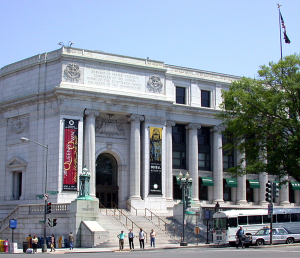 The Smithsonian Philatelic Achievement Award (SPAA) was established in 2002 to honor and celebrate living individuals for outstanding lifetime achievement in the field of philately. This achievement may include original research that significantly advances the understanding of philately, exceptional service to the philatelic community or sustained promotion of philately to the benefit of current and future collectors.
The Smithsonian Philatelic Achievement Award (SPAA) was established in 2002 to honor and celebrate living individuals for outstanding lifetime achievement in the field of philately. This achievement may include original research that significantly advances the understanding of philately, exceptional service to the philatelic community or sustained promotion of philately to the benefit of current and future collectors.
“The National Postal Museum is honored to present this prestigious award to these distinguished individuals,” said Elliot Gruber, director of the museum. “This lifetime achievement award recognizes their exceptional service to the international philatelic community, to the benefit of current and future collectors.”
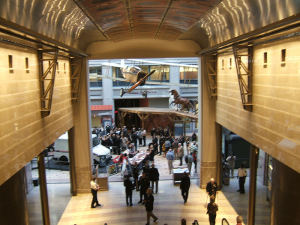 The SPAA award medallion is a 3-inch, gold-plated bronze disc depicting a sunburst with eight straight and eight wavy rays. Derived from the family coat of arms of James Smithson, founding benefactor of the Smithsonian Institution, the sunburst became the Institution’s official seal June 3, 1966, and is incorporated into the official flag flown by Smithsonian facilities and Smithsonian-sponsored expeditions throughout the world. As such, it is a universally recognized symbol of enlightenment and learning that links the Smithsonian’s history with its future. The medallion is suspended from a grosgrain neck ribbon in Smithsonian blue and yellow.
The SPAA award medallion is a 3-inch, gold-plated bronze disc depicting a sunburst with eight straight and eight wavy rays. Derived from the family coat of arms of James Smithson, founding benefactor of the Smithsonian Institution, the sunburst became the Institution’s official seal June 3, 1966, and is incorporated into the official flag flown by Smithsonian facilities and Smithsonian-sponsored expeditions throughout the world. As such, it is a universally recognized symbol of enlightenment and learning that links the Smithsonian’s history with its future. The medallion is suspended from a grosgrain neck ribbon in Smithsonian blue and yellow.
“I am excited that the Smithsonian Institution is honoring these three talented collectors,” said Donald Sundman, chair of the museum’s Council of Philatelists. “They have shared their profound love of stamps and collecting in different ways, helping people around the world enjoy the great hobby of stamp collecting.”
A special website provides information about the SPAA gala event, including information on purchasing tickets to attend the event.
About the recipients:
Alfredo Harp Helú, Mexico (born 1944), is the founder and philanthropist behind Latin America’s only philatelic museum, the Museo de Filatelia de Oaxaca (MUFI). An 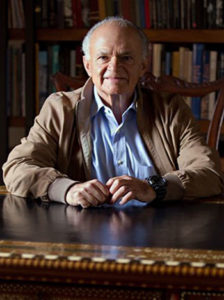 accomplished, lifelong philatelist who possessed a complete collection of stamps of Mexico, Helú was inspired by two foundational experiences in the mid-1990s. The first was a visit to then-recently opened National Postal Museum. The second was his participation in a temporary exhibition on the numismatics and philately of Oaxaca State, organized in 1996 by the Instituto de Artes Gráficas de Oaxaca.
accomplished, lifelong philatelist who possessed a complete collection of stamps of Mexico, Helú was inspired by two foundational experiences in the mid-1990s. The first was a visit to then-recently opened National Postal Museum. The second was his participation in a temporary exhibition on the numismatics and philately of Oaxaca State, organized in 1996 by the Instituto de Artes Gráficas de Oaxaca.
These experiences led Helú to create a permanent philatelic museum as a way to share his personal collection and passion for philately with the Mexican people in an atmosphere promoting reflection and coexistence through stamps, art and culture. Toward this goal, the Fundación Alfredo Harp Helú Oaxaca (FAHHO) purchased and restored a colonial-era house at 504 Calle Reforma in the historical city center of Oaxaca, and MUFI was inaugurated July 9, 1998. The museum is free and open to the public seven days per week, professionally managed and curated by FAHHO-sponsored staff.
Helú donated his personal collection to the museum; his initial gift has since been augmented by dozens of other collectors from around the world so that the museum’s holdings are now worldwide in scope. In addition, MUFI has a research library of more than 6,000 books named for Mexican philatelist Jose Lorenzo Cossío y Cosío, whose personal library forms the core of the collection.
MUFI has become a cultural center of Oaxaca State, hosting philately clubs for children and adults, lectures, book presentations, concerts and other events. The museum mounts multiple temporary exhibitions each year and has hosted several Mexico-Elmhurst Philatelic Society, International (MEPSI) conventions in Oaxaca, most recently in 2018. To accommodate the increased activity and growth, in 2000 FAHHO remodeled the building at 500 Calle Reforma and added it to the original museum. The purchase and rehabilitation of a third, adjoining building is currently underway.
Janet R. Klug, FRPSL, United States (born 1950), has said she “never met a stamp she didn’t like.” A collector from the age of 6, her specialized exhibits of Tonga, Samoa, Malaya and Japan under Australian occupation have won a World Series of Philately show 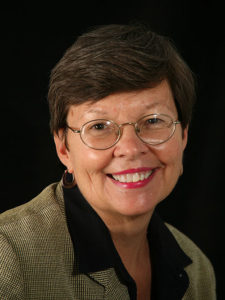 grand, a grand prix national in Australia, and an international one-frame gold.
grand, a grand prix national in Australia, and an international one-frame gold.
Klug promotes philately to a wide audience by writing about stamp collecting in an accessible, uncomplicated style attractive to beginners. Her “Refresher Course” and “Stamp Excursions” columns have appeared in Linn’s Stamp News since 2002. She wrote a “Down Under” column for Scott Stamp Monthly from 1999 to 2010 and the “Starting Point” column for The American Philatelist from 1998 to 2003. Her book-length publications include Catalog of Tin Can Mail Cachets of the Tonga Islands (1984), 100 Greatest American Stamps (2007) (co-authored with Donald J. Sundman) and Guide to Stamp Collecting (2008).
Klug was appointed a member (2010–2014) of the U.S. Postal Service Citizens’ Stamp Advisory Committee by Postmaster General John Potter and was named chair (2014–present) by Postmaster General Patrick Donahoe. She was vice chair of the National Postal Museum’s Council of Philatelists (2003–2007) and chair of its New Initiatives Committee (2009–2013). She served the American Philatelic Society (APS) as an officer for 10 consecutive years as secretary (1997–2001), vice president (2001–2003) and president (2003–2007). She was chair of the APS Committee on Accreditation of National Exhibitions and Judges (1999–2003) and was herself an accredited judge 1991–2015.
Klug has previously been recognized with the Philadelphia National Stamp Exhibition Lifetime Achievement Award (2007), the APS Writers Unit Hall of Fame (2010), the St. Louis Stamp Expo’s Elizabeth C. Pope Award for Lifetime Contributions to Philately (2011), a Daniel W. Vooys Fellowship at the American Philatelic Research Library (2012) and the Luff Award for Outstanding Service to the APS (2014).
Charles F. Shreve, FRPSL, United States (born 1954), started collecting stamps at age 12 and was soon working at a local stamp shop on Saturdays to pay for his purchases. 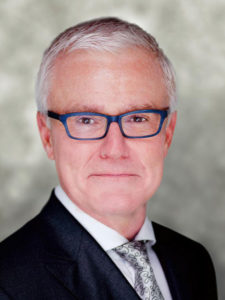 While still a teenager, he became an apprentice auction lot describer for Roger Koerber Auctions in Southfield, Michigan. He joined Sotheby Parke Bernet Stamp Auction Company in 1977 and left in 1980 to lead Steve Ivy Philatelic Auctions Inc., ultimately becoming a partner in Ivy, Shreve and Mader, one of the largest stamp auction houses in the country. He left to form Shreves Philatelic Galleries Inc. in 1994 and oversaw its sale to Spink and Son Ltd. of London in 2007, becoming president of Spink Shreves Galleries. Since 2012, Shreve has been a director of Robert A. Siegel Auction Galleries Inc. with responsibility for its international division.
While still a teenager, he became an apprentice auction lot describer for Roger Koerber Auctions in Southfield, Michigan. He joined Sotheby Parke Bernet Stamp Auction Company in 1977 and left in 1980 to lead Steve Ivy Philatelic Auctions Inc., ultimately becoming a partner in Ivy, Shreve and Mader, one of the largest stamp auction houses in the country. He left to form Shreves Philatelic Galleries Inc. in 1994 and oversaw its sale to Spink and Son Ltd. of London in 2007, becoming president of Spink Shreves Galleries. Since 2012, Shreve has been a director of Robert A. Siegel Auction Galleries Inc. with responsibility for its international division.
Using modern marketing techniques, Shreve is credited with essentially revolutionizing the way rare stamps were presented and sold at high-profile, international auctions. He also was the first stamp auctioneer to conduct his auctions live on the internet, making stamps accessible to collectors around the world.
Shreve has led major philanthropic campaigns in philately, helping to raise substantial sums for the hobby, including millions for the National Postal Museum’s William H. Gross Stamp Gallery. He spearheaded a $1 million fundraising campaign in 2000 to help refurbish the historic Collectors Club townhouse in New York City and also served as the Development Chair for World Stamp Show–NY2016.
A member of the National Postal Museum’s Council of Philatelists since 2001, Shreve is chair of the Council’s Advancement Committee. He is an expert consultant to, and member of the board of trustees of, the Philatelic Foundation and was a member of the board of governors of the Collectors Club of New York (1999–2013). He is a fellow of the Royal Philatelic Society London and a Daniel W. Vooys Fellow of the American Philatelic Research Library (2011), in addition to life memberships in the American Stamp Dealers Association, American Philatelic Society and U.S. Philatelic Classics Society. His other memberships include the American Revenue Association, Carriers and Locals Society and the Philatelic Traders Society (London).
About the Smithsonian’s National Postal Museum
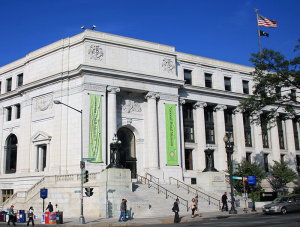 The National Postal Museum is devoted to presenting the colorful and engaging history of the nation’s mail service and showcasing one of the largest and most comprehensive collections of stamps and philatelic material in the world. It is located at 2 Massachusetts Ave. N.E., Washington, D.C., across from Union Station. The museum is open daily from 10 a.m. to 5:30 p.m. (closed Dec. 25). For more information about the Smithsonian, call (202) 633-1000 or visit the museum website at www.postalmuseum.si.edu.
The National Postal Museum is devoted to presenting the colorful and engaging history of the nation’s mail service and showcasing one of the largest and most comprehensive collections of stamps and philatelic material in the world. It is located at 2 Massachusetts Ave. N.E., Washington, D.C., across from Union Station. The museum is open daily from 10 a.m. to 5:30 p.m. (closed Dec. 25). For more information about the Smithsonian, call (202) 633-1000 or visit the museum website at www.postalmuseum.si.edu.
 The Smithsonian’s National Postal Museum has announced the appointment of Charles F. Shreve as chair of its Council of Philatelists. The council provides the museum with philatelic advice, advises on engagement with the global philatelic community, promotes and advocates for the museum’s mission, purpose and programs to the nation and helps build the financial base of the museum. Members are appointed by the Smithsonian’s Board of Regents.
The Smithsonian’s National Postal Museum has announced the appointment of Charles F. Shreve as chair of its Council of Philatelists. The council provides the museum with philatelic advice, advises on engagement with the global philatelic community, promotes and advocates for the museum’s mission, purpose and programs to the nation and helps build the financial base of the museum. Members are appointed by the Smithsonian’s Board of Regents. founded Shreves Philatelic Galleries, and the firm quickly rose to a leading position in the international philatelic marketplace. In 2007 he sold his firm to an international auction company based in London and became an independent consultant for high end collectors. In 2012 he joined Robert A. Siegel Auction Galleries as director of their International auctions. In his career Charles has been involved in the sale of nearly one billion dollars’ worth of rare philatelic material.
founded Shreves Philatelic Galleries, and the firm quickly rose to a leading position in the international philatelic marketplace. In 2007 he sold his firm to an international auction company based in London and became an independent consultant for high end collectors. In 2012 he joined Robert A. Siegel Auction Galleries as director of their International auctions. In his career Charles has been involved in the sale of nearly one billion dollars’ worth of rare philatelic material. Shreve succeeds Donald Sundman as chair of the museum’s Council of Philatelists. Sundman served as chair since 2003 and will continue serving as a member of the council. “Don Sundman has been a central guiding force for the National Postal Museum,” said Gruber. “His dedication and passion to the National Postal Museum has been instrumental in broadening the reach of the museum within the global philatelic community.”
Shreve succeeds Donald Sundman as chair of the museum’s Council of Philatelists. Sundman served as chair since 2003 and will continue serving as a member of the council. “Don Sundman has been a central guiding force for the National Postal Museum,” said Gruber. “His dedication and passion to the National Postal Museum has been instrumental in broadening the reach of the museum within the global philatelic community.”
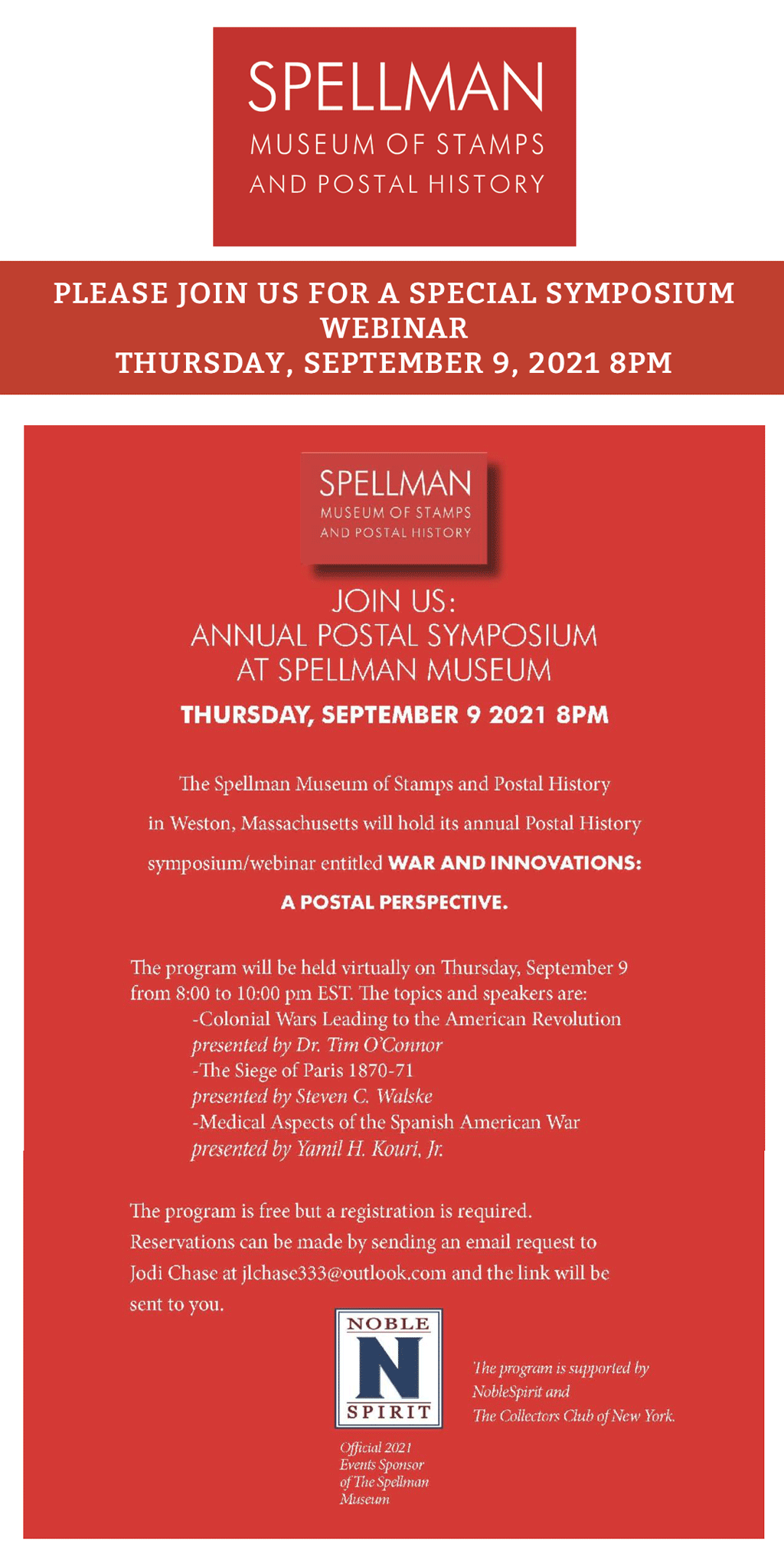
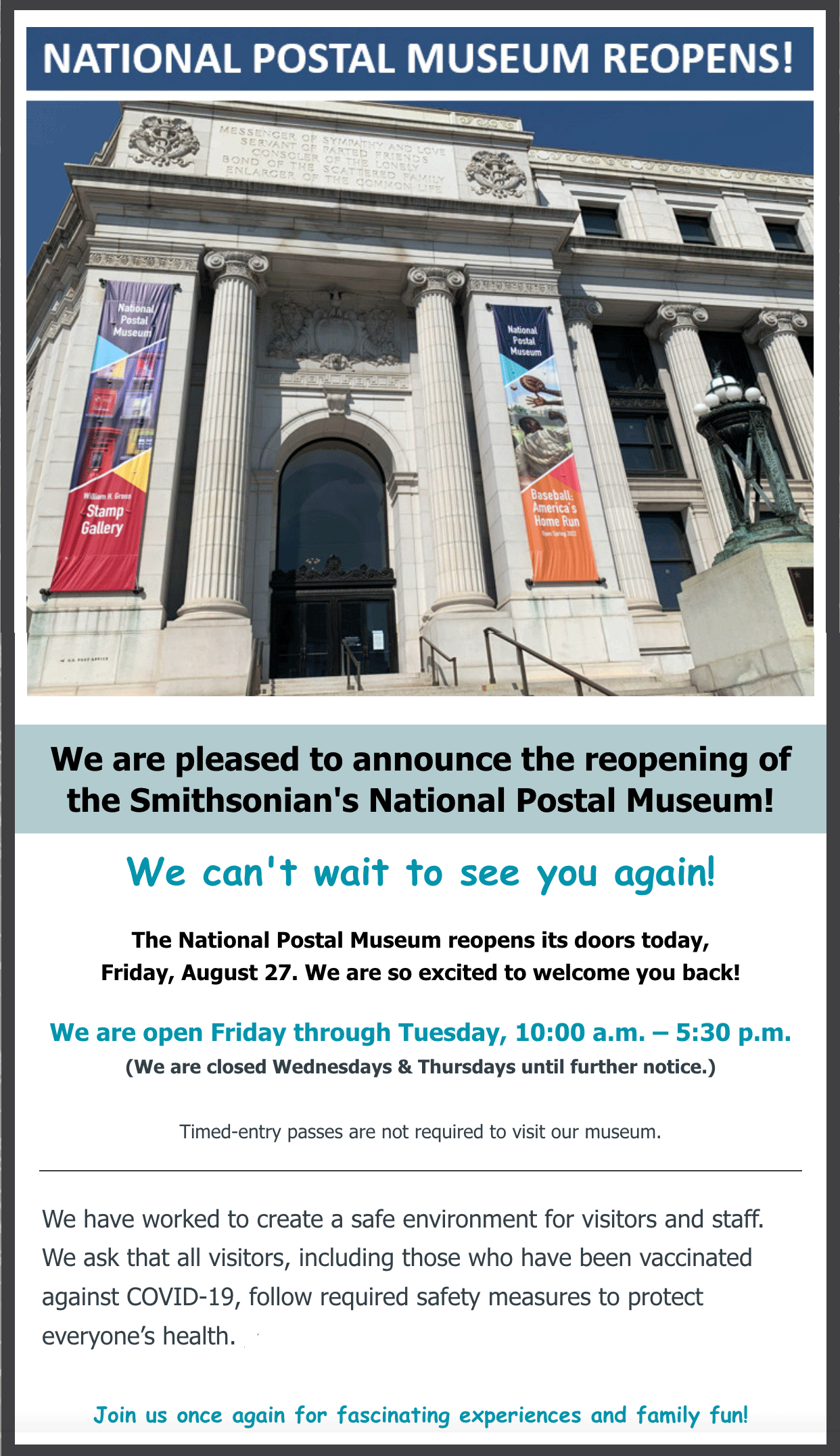

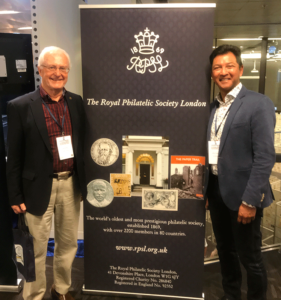 The Smithsonian’s National Postal Museum will host the 16th Maynard Sundman Lecture Wednesday, Nov. 6, from noon to 1 p.m. in the museum’s Discovery Center. Admission is free, with no reservation required. The moderated discussion about the postal history of World War II will be held with Kees Adema and Jeffrey Groeneveld (L-R at left), co-authors of The Paper Trail: World War II in Holland and Its Colonies as Seen Through Mail and Documents.
The Smithsonian’s National Postal Museum will host the 16th Maynard Sundman Lecture Wednesday, Nov. 6, from noon to 1 p.m. in the museum’s Discovery Center. Admission is free, with no reservation required. The moderated discussion about the postal history of World War II will be held with Kees Adema and Jeffrey Groeneveld (L-R at left), co-authors of The Paper Trail: World War II in Holland and Its Colonies as Seen Through Mail and Documents.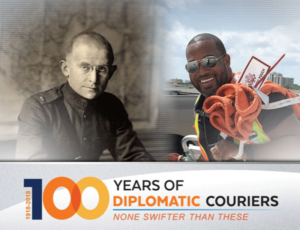 “None Swifter Than These: 100 Years of Diplomatic Couriers” opens Sept. 14 at the Smithsonian’s National Postal Museum. Developed by the Diplomatic Security Service of the U.S. Department of State, the exhibition is on view through Jan. 26, 2020.
“None Swifter Than These: 100 Years of Diplomatic Couriers” opens Sept. 14 at the Smithsonian’s National Postal Museum. Developed by the Diplomatic Security Service of the U.S. Department of State, the exhibition is on view through Jan. 26, 2020. The Smithsonian Philatelic Achievement Award (SPAA) was established in 2002 to honor and celebrate living individuals for outstanding lifetime achievement in the field of philately. This achievement may include original research that significantly advances the understanding of philately, exceptional service to the philatelic community or sustained promotion of philately to the benefit of current and future collectors.
The Smithsonian Philatelic Achievement Award (SPAA) was established in 2002 to honor and celebrate living individuals for outstanding lifetime achievement in the field of philately. This achievement may include original research that significantly advances the understanding of philately, exceptional service to the philatelic community or sustained promotion of philately to the benefit of current and future collectors. The SPAA award medallion is a 3-inch, gold-plated bronze disc depicting a sunburst with eight straight and eight wavy rays. Derived from the family coat of arms of James Smithson, founding benefactor of the Smithsonian Institution, the sunburst became the Institution’s official seal June 3, 1966, and is incorporated into the official flag flown by Smithsonian facilities and Smithsonian-sponsored expeditions throughout the world. As such, it is a universally recognized symbol of enlightenment and learning that links the Smithsonian’s history with its future. The medallion is suspended from a grosgrain neck ribbon in Smithsonian blue and yellow.
The SPAA award medallion is a 3-inch, gold-plated bronze disc depicting a sunburst with eight straight and eight wavy rays. Derived from the family coat of arms of James Smithson, founding benefactor of the Smithsonian Institution, the sunburst became the Institution’s official seal June 3, 1966, and is incorporated into the official flag flown by Smithsonian facilities and Smithsonian-sponsored expeditions throughout the world. As such, it is a universally recognized symbol of enlightenment and learning that links the Smithsonian’s history with its future. The medallion is suspended from a grosgrain neck ribbon in Smithsonian blue and yellow. accomplished, lifelong philatelist who possessed a complete collection of stamps of Mexico, Helú was inspired by two foundational experiences in the mid-1990s. The first was a visit to then-recently opened National Postal Museum. The second was his participation in a temporary exhibition on the numismatics and philately of Oaxaca State, organized in 1996 by the Instituto de Artes Gráficas de Oaxaca.
accomplished, lifelong philatelist who possessed a complete collection of stamps of Mexico, Helú was inspired by two foundational experiences in the mid-1990s. The first was a visit to then-recently opened National Postal Museum. The second was his participation in a temporary exhibition on the numismatics and philately of Oaxaca State, organized in 1996 by the Instituto de Artes Gráficas de Oaxaca. grand, a grand prix national in Australia, and an international one-frame gold.
grand, a grand prix national in Australia, and an international one-frame gold.

